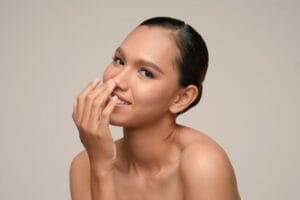Decision Stage of Rhinoplasty: A Complete Guide to Making the Right Choice
Alice had been thinking about rhinoplasty for years. Every morning, she’d catch her reflection in the mirror and wonder: could a different nose shape give her the confidence she was looking for? But like many people considering cosmetic surgery, she found herself stuck in what surgeons call the “decision stage of rhinoplasty” – that period between initial interest and actually booking a consultation.
Question: What is the decision stage of rhinoplasty?
Answer: The decision stage of rhinoplasty is the period when you’re actively considering the procedure but haven’t committed to surgery. It involves researching the procedure, evaluating your motivations, understanding candidacy, finding the right surgeon, and preparing emotionally and financially. This stage can last weeks, months, or years.
The decision stage of rhinoplasty isn’t just about wanting a different nose. It’s a complex process that involves understanding your motivations, evaluating your candidacy, finding the right surgeon, and preparing both mentally and financially for the procedure. This phase can last weeks, months, or even years, and it’s often the most critical part of your rhinoplasty journey.
Here’s what you need to know: the decision stage of rhinoplasty requires careful consideration of multiple factors. You’re not just choosing a procedure – you’re choosing a surgeon, a timing that works for your life, realistic expectations, and a recovery plan. Get any of these wrong, and you might end up with results that don’t match what you envisioned. But when you navigate this stage thoughtfully, you set yourself up for a successful outcome and genuine satisfaction with your results.
Understanding the Decision Stage of Rhinoplasty
The decision stage of rhinoplasty is that period when you’re actively considering the procedure but haven’t yet committed to surgery. It’s different from the consultation phase, where you’re meeting with surgeons and discussing specifics. During the decision stage, you’re gathering information, weighing pros and cons, and determining whether rhinoplasty aligns with your goals and lifestyle.
What makes this stage particularly challenging is the sheer amount of information available – and the misinformation. You’ll find conflicting advice about recovery times, conflicting opinions about what’s achievable, and conflicting experiences from people who’ve had the procedure. Some sources will tell you rhinoplasty is a simple procedure with minimal downtime; others will warn about complications and long recovery periods. The truth usually falls somewhere in the middle, depending on your specific case.
In my practice, I’ve observed that patients who spend adequate time in the decision stage tend to have better outcomes. They’ve thought through their motivations, they understand what’s realistic, and they’ve chosen surgeons who align with their aesthetic goals. Rushing through this stage – especially under pressure from discount promotions or limited-time offers – often leads to disappointing results.
The decision stage of rhinoplasty also involves understanding that this isn’t a decision you can easily reverse. While revision rhinoplasty is possible, it’s more complex, more expensive, and often less predictable than primary surgery. That’s why taking your time during the decision phase matters so much.
Key Factors to Consider During the Decision Stage
Your Motivations: Why Do You Want Rhinoplasty?
This might seem obvious, but it’s worth examining your reasons carefully. Are you considering rhinoplasty because you genuinely dislike your nose, or are you hoping it will solve other problems in your life? Some people think a nose job will fix their dating life, their career, or their self-esteem – and while rhinoplasty can boost confidence, it won’t solve underlying issues that aren’t related to your appearance.
Surgeons report that patients who have clear, realistic motivations tend to be happier with their results. They’re not expecting rhinoplasty to transform their entire life; they just want a nose that better fits their face or addresses functional issues like breathing problems.
There’s also the question of timing. Are you considering rhinoplasty because of a recent life change – a breakup, a new job, social pressure? Or is this something you’ve thought about consistently for a long time? The latter usually indicates a more stable motivation that’s less likely to change after surgery.
Physical Candidacy for Rhinoplasty
Not everyone is a good candidate for rhinoplasty, and understanding your candidacy is a crucial part of the decision stage. Age plays a role – most surgeons recommend waiting until facial growth is complete, which typically happens around age 15-16 for girls and 17-18 for boys. But there’s no upper age limit as long as you’re in good health.
Your overall health matters too. Rhinoplasty requires general anesthesia for complex cases, though some procedures can be done under local anesthesia with sedation. If you have underlying health conditions – heart problems, bleeding disorders, or certain medications – you’ll need to discuss these with potential surgeons.
Skin type also factors into candidacy. Thick skin, for example, can make rhinoplasty more challenging and may limit the types of changes that are achievable. Thin skin, on the other hand, requires more careful technique to avoid visible irregularities. Neither disqualifies you, but it affects what’s realistic.
Decision Stage of Rhinoplasty: Functional vs. Aesthetic Concerns
Many people think rhinoplasty is purely cosmetic, but there’s often a functional component. If you have difficulty breathing through your nose, a deviated septum, or nasal valve collapse, rhinoplasty might address both aesthetic and functional issues. This is called a functional rhinoplasty or septorhinoplasty.
Understanding whether you need functional improvements affects your decision in several ways. First, insurance might cover part of the procedure if there’s a documented breathing problem. Second, functional improvements often require more complex surgery, which means longer recovery and potentially different techniques.
During the decision stage of rhinoplasty, it’s worth getting a clear picture of your nasal function. Can you breathe equally well through both nostrils? Do you experience congestion that doesn’t respond to medication? These functional considerations might not be obvious, but they’re important for planning the right procedure.
Finding the Right Surgeon: A Critical Decision
One of the most important aspects of the decision stage of rhinoplasty is surgeon selection. Not all plastic surgeons specialize in rhinoplasty, and even among those who do, there’s significant variation in skill, aesthetic style, and approach. Choosing the wrong surgeon can lead to results you’re unhappy with, necessitating expensive and complex revision surgery.
Board Certification Matters
Start with board certification. Your surgeon should be certified by the American Board of Plastic Surgery or the American Board of Facial Plastic and Reconstructive Surgery. Board certification means they’ve completed rigorous training and passed comprehensive exams. But it’s not enough on its own – you also want someone who focuses a significant portion of their practice on rhinoplasty.
I’ve seen patients who went to board-certified surgeons who primarily did other procedures – breast augmentation, tummy tucks, facelifts – and their rhinoplasty results reflected that surgeon’s lack of specialization. Rhinoplasty is one of the most technically demanding procedures in plastic surgery, and it requires ongoing practice to maintain skills.
Review Before-and-After Photos Carefully
When you’re in the decision stage of rhinoplasty, you’ll spend a lot of time looking at before-and-after photos. This is valuable research, but there are things to watch for. First, make sure the photos are from the surgeon you’re considering, not stock photos or images from another practice. Second, look for patients with similar nose types and concerns to yours.
But here’s what many people miss: look for consistency. Does the surgeon produce good results across different nose types, or do they excel at one specific style? A surgeon who only does one type of nose – very small, very upturned, very straight – might not be the right choice if your goals are different.
Also pay attention to whether the results look natural. Some surgeons create noses that are technically well-executed but look obviously “done.” Others have a talent for creating results that look like they could have been natural. During the decision stage, think about which aesthetic you prefer.
The Consultation Process
The consultation is where the decision stage of rhinoplasty transitions into active planning. But it’s also a crucial evaluation period – you’re not just being evaluated as a patient; you should be evaluating the surgeon and their practice.
A good consultation includes computer imaging or morphing, where the surgeon shows you what’s realistically achievable. This is valuable, but it’s not a guarantee – it’s a tool for communication. Beware of surgeons who promise to match the morph exactly, or who create morphs that look unrealistic. Rhinoplasty is surgery, not Photoshop, and there are anatomical limits to what can be achieved.
During consultation, you should feel heard. The surgeon should listen to your concerns, answer your questions thoroughly, and explain both the benefits and limitations of the procedure. If you feel rushed, dismissed, or pressured, that’s a red flag. The decision stage of rhinoplasty is about making the right choice, not just any choice.
Understanding Surgeon Fees and What They Include
The decision stage of rhinoplasty also involves understanding costs, and this is more complex than it seems. The surgeon’s fee is just one part of the total cost. You’ll also pay for anesthesia, facility fees, and possibly implants or other materials.
Some surgeons quote an “all-inclusive” price that covers everything. Others quote just the surgeon’s fee, and you’ll get separate bills for anesthesia and facility fees. During the decision stage, make sure you understand exactly what’s included in quoted prices. A lower surgeon’s fee might not mean a lower total cost if other fees are higher.
Also consider what happens if you need revision surgery. Some surgeons include minor revisions in their initial fee for a certain period – typically a year. Others charge separately for any revision work. This matters because even with an excellent surgeon and successful surgery, minor tweaks are sometimes needed.
Timing: When Is the Right Time for Rhinoplasty?
The decision stage of rhinoplasty includes timing considerations, and this isn’t just about scheduling convenience. There are medical, practical, and emotional factors that affect when rhinoplasty makes sense.
Age Considerations
If you’re a teenager considering rhinoplasty, timing involves waiting until facial growth is complete. Most surgeons won’t perform rhinoplasty on patients under 15-16, and even then, they’ll evaluate whether growth appears complete. Having rhinoplasty too early can lead to problems as the face continues to develop.
For adults, there’s no upper age limit, but older patients need to consider overall health and healing capacity. Rhinoplasty is generally safe for healthy patients in their 60s, 70s, and even 80s, but recovery might take longer, and the risk of complications increases with age and underlying health conditions.
Life Stage and Practical Considerations
Rhinoplasty requires downtime – typically 1-2 weeks before you can return to work, and longer before you can resume strenuous activities. The decision stage of rhinoplasty should include planning for this recovery period. Do you have vacation time available? Can you take time off from work or school? Do you have help at home during the initial recovery?
Also consider upcoming events. You’ll have visible bruising and swelling for the first week or two, and residual swelling can last for months. If you have a wedding, job interview, or important event coming up, you might want to time your rhinoplasty accordingly.
The decision stage of rhinoplasty also involves seasonal considerations. Some people prefer to have surgery during cooler months when they can wear scarves or masks that help conceal initial swelling. Others prefer summer when they have more flexible schedules. There’s no “best” time medically, but there might be a best time for your lifestyle.
Decision Stage of Rhinoplasty: Emotional and Mental Readiness
This is often overlooked during the decision stage of rhinoplasty, but it matters. Are you in a stable place emotionally? Rhinoplasty recovery can be challenging, and initial swelling can make results look worse before they look better. If you’re dealing with major life stress, depression, or anxiety, it might be worth addressing those issues first.
Some surgeons won’t operate on patients who are actively struggling with body dysmorphic disorder or eating disorders, as these conditions can affect satisfaction with results regardless of surgical outcome. The decision stage is a good time to honestly evaluate your mental and emotional state.
Financial Planning: The Cost of Rhinoplasty
The decision stage of rhinoplasty absolutely must include financial planning. Rhinoplasty is expensive – typically $5,000 to $15,000 or more, depending on complexity, surgeon, and geographic location. This isn’t a decision to make without understanding the full financial commitment.
Understanding the Full Cost
As mentioned, the surgeon’s fee is just one component. You’ll also pay for:
- Anesthesia (typically $1,000-$2,000)
- Facility fees ($1,500-$3,000 or more)
- Pre-operative tests and consultations
- Post-operative medications and supplies
- Follow-up appointments (usually included in surgeon’s fee)
During the decision stage of rhinoplasty, get detailed cost breakdowns from any surgeons you’re considering. This helps you compare apples to apples and understand exactly what you’re paying for.
Insurance Considerations
Pure cosmetic rhinoplasty isn’t covered by insurance, but if you have functional issues like breathing problems, part of the procedure might be covered. This requires documentation of the functional problem – usually through a nasal exam and possibly imaging studies.
The decision stage of rhinoplasty should include checking with your insurance company about coverage if you have functional concerns. Even if only part of the procedure is covered, that can significantly reduce your out-of-pocket cost.
Decision Stage of Rhinoplasty: Financing Options
Many practices offer financing through third-party companies like CareCredit or Prosper Healthcare Lending. These can make rhinoplasty more accessible, but they’re loans, and you’ll pay interest. During the decision stage, carefully consider whether financing makes sense for your situation and whether you can comfortably afford the monthly payments.
Setting Realistic Expectations
Perhaps the most critical aspect of the decision stage of rhinoplasty is setting realistic expectations. Unrealistic expectations are the primary reason patients are dissatisfied with results, even when the surgery is technically successful.
What Rhinoplasty Can and Cannot Do
Rhinoplasty can:
- Reshape your nose to better fit your face
- Reduce or increase nose size
- Change the angle of your nose
- Refine the tip or bridge
- Address functional breathing issues
- Improve facial harmony
Rhinoplasty cannot:
- Give you a completely different face
- Guarantee you’ll look like a specific celebrity
- Fix relationship or career problems
- Eliminate all imperfections
- Prevent future aging changes
During the decision stage of rhinoplasty, be honest about what you’re hoping to achieve. If your goals aren’t realistic, a good surgeon will tell you during consultation. That’s actually a sign of an ethical, skilled surgeon – they’d rather lose a potential patient than perform surgery that won’t meet expectations.
Understanding the Healing Process
Many people don’t realize that rhinoplasty results develop over time. Immediately after surgery, you’ll have significant swelling and possibly bruising. Over the first few weeks, most of this resolves, but subtle swelling can persist for months or even a year.
The decision stage of rhinoplasty should include understanding that you won’t see final results immediately. The nose you see at one month is different from the nose at six months, which is different from the nose at one year. This requires patience and realistic expectations about the timeline.
Decision Stage of Rhinoplasty: The Role of Your Anatomy
Your existing anatomy limits what rhinoplasty can achieve. Thick skin, weak cartilage, previous injuries, or scar tissue all affect outcomes. During the decision stage, it’s important to understand that your surgeon can work with your anatomy, not against it.
A skilled surgeon will explain these limitations during consultation. They’ll show you computer imaging that reflects what’s realistically achievable given your specific anatomy. This is part of setting appropriate expectations during the decision stage of rhinoplasty.
Questions to Ask Yourself During the Decision Stage
As you navigate the decision stage of rhinoplasty, here are questions worth asking:
- Have I wanted this change for at least a year? Temporary desires often fade, but persistent concerns usually indicate genuine motivation.
- Am I doing this for myself or someone else? Rhinoplasty should be your choice, not something you’re doing to please a partner, parent, or social media following.
- Do I understand the risks? Every surgery has risks – infection, bleeding, anesthesia complications, unsatisfactory results, need for revision. Are you comfortable accepting these risks?
- Can I afford this without financial stress? Rhinoplasty shouldn’t create financial hardship. If paying for it would cause significant stress, it might be worth waiting.
- Am I prepared for recovery? Can you take time off work? Do you have help at home? Can you handle initial swelling and bruising?
- Do I have realistic expectations? Are you hoping for improvement or perfection? The former is achievable; the latter often isn’t.
- Have I done enough research? The decision stage of rhinoplasty requires understanding the procedure, recovery, risks, and what’s realistic. Have you done your homework?
Red Flags to Watch For During the Decision Stage of Rhinoplasty
While researching during the decision stage of rhinoplasty, watch for these red flags:
Surgeon red flags:
- Pressuring you to book immediately with “limited time” offers
- Promising to make you look like a celebrity
- Unwilling to show before-and-after photos
- Not board-certified or certified by a questionable board
- Operating in unaccredited facilities
- Quoting prices that seem too good to be true
Expectation red flags:
- Guaranteeing specific results
- Minimizing recovery time or difficulty
- Not discussing risks or potential complications
- Creating unrealistic computer morphs
- Rushing through consultation
Financial red flags:
- Requiring full payment before surgery
- Offering financing with extremely high interest rates
- Not providing detailed cost breakdowns
- Pressuring you to finance more than you can afford
The decision stage of rhinoplasty is your opportunity to identify these issues before committing to surgery. If something feels off, trust your instincts and continue researching.
Moving from Decision Stage of Rhinoplasty to Consultation
Once you’ve thoroughly researched during the decision stage of rhinoplasty, you’re ready to schedule consultations. Ideally, consult with at least 2-3 surgeons to compare approaches, communication styles, and costs.
During consultation, you’ll discuss your goals in detail, see computer imaging, learn about the surgeon’s approach, and get a detailed cost breakdown. This is where the decision stage of rhinoplasty transitions into active planning – but you’re still evaluating whether this is right for you.
A good consultation should leave you feeling informed and confident. You should understand what the surgeon plans to do, why they’re recommending that approach, what the recovery will be like, and what results are realistic. If you leave a consultation feeling confused, pressured, or uncertain, that surgeon might not be the right fit.
The Bottom Line on the Decision Stage of Rhinoplasty
The decision stage of rhinoplasty isn’t something to rush through. It’s a process of gathering information, evaluating your motivations, understanding what’s realistic, finding the right surgeon, and preparing emotionally and financially. Patients who take this stage seriously tend to have better outcomes and higher satisfaction.
Remember that rhinoplasty is a significant decision – it’s surgery, it’s expensive, it requires recovery, and results are permanent (though they can be revised). The decision stage is your opportunity to make sure this is the right choice for you, at the right time, with the right surgeon.
If you’re in the decision stage of rhinoplasty, take your time. Do your research. Consult with multiple surgeons. Ask questions. Set realistic expectations. And remember: there’s no deadline. You can always decide to wait, or you can decide it’s not right for you at all. The decision stage is about making the choice that’s right for you – not the choice that feels most immediate or most pressured.













